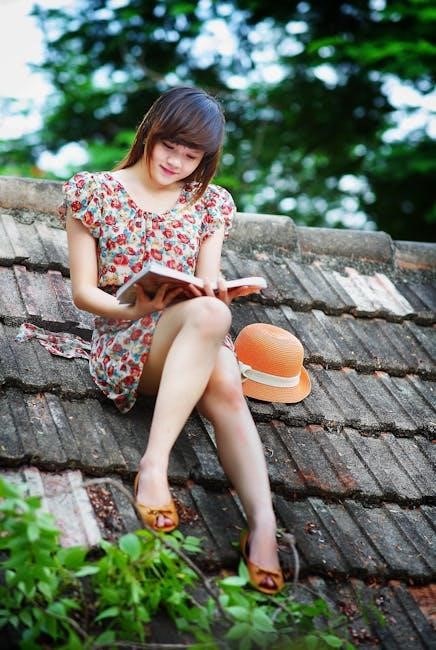
“Beauty and the Beast” is a timeless fairy tale exploring themes of true beauty, love, and transformation. Its enduring appeal lies in its universal message.
1.1 Overview of the Fairy Tale
“Beauty and the Beast” is a classic fairy tale about a young woman, Beauty, who sacrifices her freedom to save her father by living with a monstrous Beast. Over time, Beauty discovers the Beast’s kind heart, and they fall in love, breaking the curse that transformed him. The story explores themes of inner beauty, love, and transformation, contrasting outward appearances with true character. It is a timeless narrative about the power of love to overcome fear and prejudice, making it a beloved tale across generations.
1.2 Historical Significance of the Story
“Beauty and the Beast” holds significant historical value as a fairy tale written by Gabrielle-Suzanne Barbot de Villeneuve in 1740. It reflects 18th-century French society, emphasizing moral lessons and the role of women. Jeanne-Marie Leprince de Beaumont’s shorter version popularized the story, highlighting themes of kindness, inner beauty, and societal expectations. The tale has endured for centuries, offering insights into the cultural and literary traditions of its time while remaining a timeless narrative about love and transformation. Its historical roots contribute to its universal appeal and continued relevance today.
1.3 Relevance of the Book in Modern Times
The timeless themes of “Beauty and the Beast” resonate deeply in modern times. The story’s focus on inner beauty, self-acceptance, and the transformative power of love remains universally relevant. It challenges superficial judgments and promotes empathy, offering valuable lessons for contemporary audiences. The tale’s exploration of societal expectations and personal growth continues to inspire, making it a cherished resource for discussions on identity, relationships, and cultural values. Its enduring appeal ensures its place as a meaningful and thought-provoking narrative in today’s world.
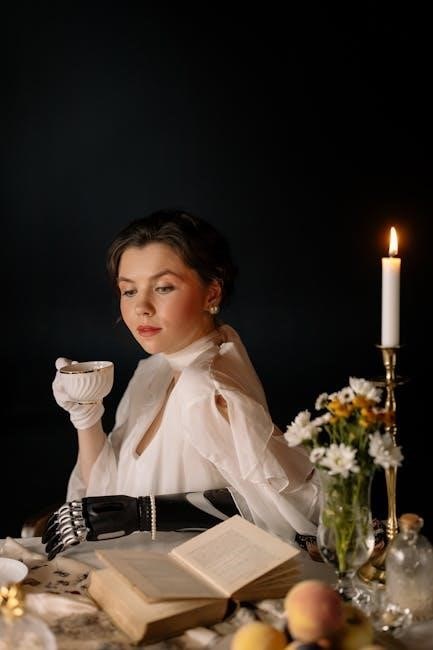
Author and Publication Details
Gabrielle-Suzanne Barbot de Villeneuve wrote the original “Beauty and the Beast” in 1740. Jeanne-Marie Leprince de Beaumont later adapted it, popularizing the tale globally.
2.1 Gabrielle-Suzanne Barbot de Villeneuve: The Original Author
Gabrielle-Suzanne Barbot de Villeneuve, a French author, penned the original “Beauty and the Beast” tale in 1740. Her version, titled La Belle et la Bête, was published in La Jeune Américaine et les Contes Marins. Villeneuve’s story was more detailed and darker than later adaptations, featuring a beast with a complex backstory. Born in 1685, she was a prominent figure in 18th-century French literature, known for her contributions to the fairy tale genre. Her work laid the groundwork for the beloved narrative, influencing future adaptations and interpretations worldwide.
2.2 Jeanne-Marie Leprince de Beaumont’s Version
Jeanne-Marie Leprince de Beaumont adapted Gabrielle-Suzanne Barbot de Villeneuve’s “Beauty and the Beast” in 1756, simplifying the story for a younger audience. Her version removed darker elements and focused on moral lessons, making it more accessible. Beaumont’s adaptation became the most widely recognized, emphasizing inner beauty and kindness. A French author and educator, she aimed to teach children virtue through storytelling. Her rendition has been the basis for most modern interpretations, including films and stage productions, cementing its place in global culture.
2.3 Publication History and Editions
“Beauty and the Beast” was first published in Gabrielle-Suzanne Barbot de Villeneuve’s collection of tales in 1740. Jeanne-Marie Leprince de Beaumont’s shorter version appeared in 1756, gaining widespread popularity. Over the years, numerous editions have been released, including illustrated versions and translations into multiple languages. The story became a staple of children’s literature in the 19th century. Modern editions often blend elements from both Villeneuve and Beaumont, ensuring its timeless appeal. Digital versions, such as the “Beauty and the Beast book PDF,” make it accessible to readers worldwide.
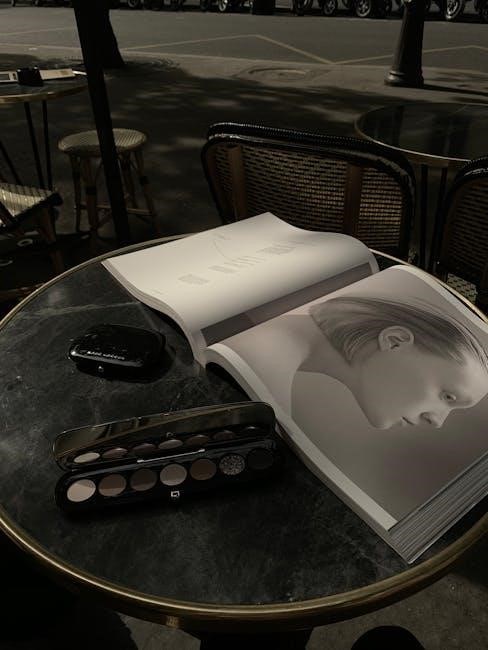
Plot Summary of “Beauty and the Beast”
A merchant’s misfortune leads to his daughter Belle’s sacrifice. She lives in a castle with the Beast, discovering kindness beneath his exterior. Love transforms everything.
3.1 The Merchant’s Misfortune and the Rose
The story begins with a once-wealthy merchant who loses everything. During a journey, he seeks shelter in a mysterious castle, where he finds abundant provisions. Upon leaving, he plucks a rose for his daughter Belle, triggering the Beast’s wrath. This act sets the stage for Belle’s eventual sacrifice, showcasing the themes of fate and responsibility tied to the rose’s symbolic significance.
3.2 Beauty’s Sacrifice and Life in the Castle
Belle selflessly offers herself in place of her father, beginning her life in the enchanted castle. Despite initial fear, she discovers the Beast’s inner kindness and the magical world of talking objects. The castle’s opulence contrasts with her humble background, yet Belle’s grace and intelligence shine through. Her daily interactions with the Beast gradually soften his demeanor, laying the groundwork for their unlikely bond. This period highlights Belle’s resilience, compassion, and the transformative power of her presence in the castle.
3.4 The Climax: The Beast’s Transformation
The story reaches its emotional peak when Belle confesses her love for the Beast, breaking the enchantment. As her words fill the air, the Beast transforms back into a handsome prince. The castle, once a prison, becomes a place of celebration. The enchanted objects return to their human forms, rejoicing in their freedom. This moment symbolizes the triumph of love over appearances and the redemptive power of kindness. The transformation marks a new beginning for Belle and the prince, united by their profound connection.
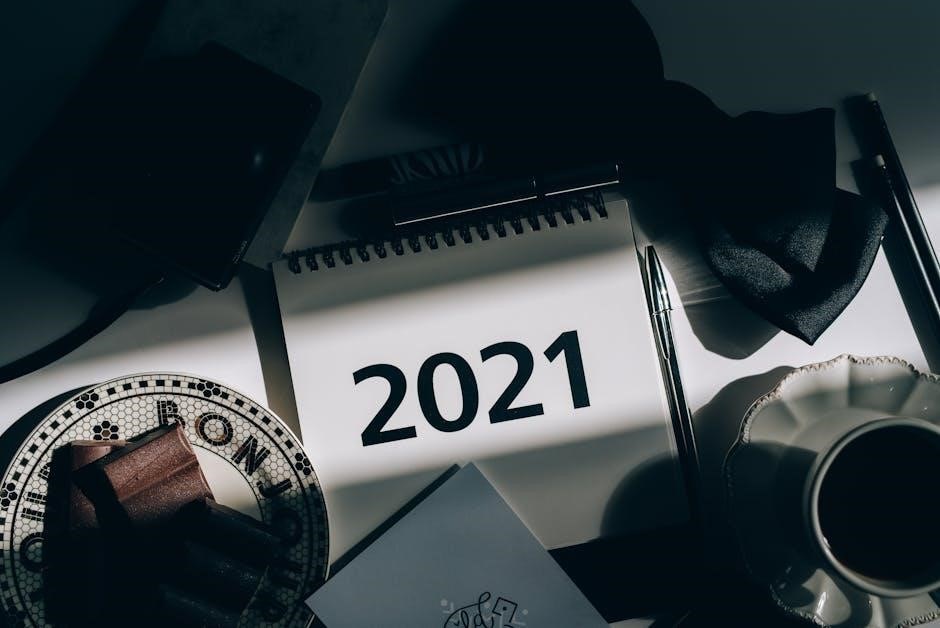
Main Characters in the Story
Belle, the intelligent and kind protagonist, stands out for her selflessness. The Beast, a complex figure, embodies both ferocity and vulnerability. Gaston, the arrogant suitor, represents vanity and greed, while Belle’s family and the enchanted objects add depth to the narrative.
4.1 Beauty: The Protagonist
Belle, or Beauty, is the embodiment of kindness, intelligence, and courage. Her selflessness shines when she takes her father’s place as the Beast’s prisoner. Unlike typical fairy tale heroines, Belle is educated and independent, valuing books over material wealth. Her compassion and empathy transform the Beast, teaching him to love beyond appearances. Belle’s strength lies in her inner beauty and resilience, making her a timeless symbol of grace and moral integrity. Her journey highlights the power of unconditional love and the triumph of inner qualities over external beauty.
4.2 The Beast: The Antagonist with Depth
The Beast is a complex character, initially portrayed as a fearsome antagonist due to his physical appearance and temper. However, his backstory reveals a prince cursed for arrogance, adding depth to his character. Throughout the story, his inner struggle between his monstrous nature and his growing humanity is evident. The Beast’s transformation is driven by Belle’s presence, showcasing his capacity for love and redemption. His journey from isolation to vulnerability highlights the theme of inner beauty and the possibility of change, making him a sympathetic and multifaceted figure in the narrative.
4.3 Gaston: The Villain and His Motivations
Gaston is the story’s antagonist, driven by arrogance, vanity, and a desire for dominance. He views Belle as a prize to be won, valuing her beauty over her intellect. His motivations stem from a need for validation and admiration, which he believes marriage to Belle will fulfill. Gaston’s refusal to accept rejection and his lack of empathy highlight his shallow character. His actions, such as leading a mob to attack the Beast, reveal his willingness to resort to violence to achieve his goals, further solidifying his role as the story’s main villain.
4.4 Supporting Characters: Belle’s Family and the Enchanted Objects
Belle’s family, including her father Maurice and her brothers, plays a crucial role in shaping her character. Maurice, a kind inventor, embodies wisdom and unconditional love, while Belle’s brothers represent contrasting personalities that add depth to the story. The enchanted objects, such as Lumiere, Cogsworth, and Mrs. Potts, bring warmth and humor to the narrative. These magical beings, cursed alongside the Beast, serve as loyal companions and guides, helping Belle and the Beast navigate their blossoming relationship. Their presence enriches the story, highlighting themes of friendship and transformation.
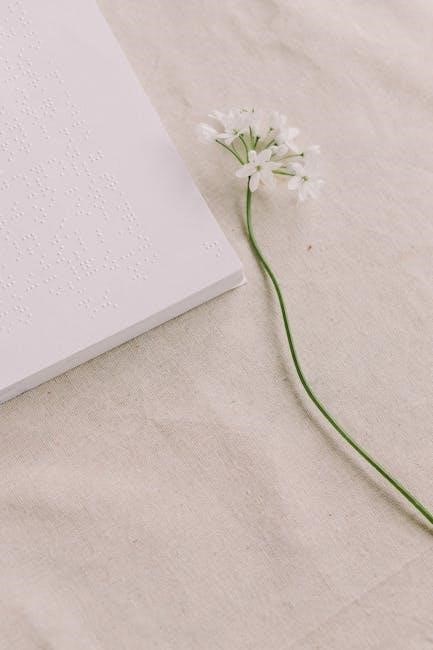
Themes and Symbolism
The story explores timeless themes such as true beauty beyond physical appearance, the transformative power of love, and the inner change of the Beast. Enchanted objects symbolize human qualities, emphasizing moral lessons about kindness and acceptance.
5.1 The Essence of True Beauty
The essence of true beauty in “Beauty and the Beast” lies in inner qualities like kindness, compassion, and courage. Belle exemplifies this through her selflessness and love for others, transcending physical appearance. While Gaston embodies superficial vanity, Belle’s gentle nature and intellect reveal that true beauty stems from character. The story emphasizes that inner beauty fosters meaningful connections, ultimately transforming lives. This timeless message encourages readers to value depth over surface-level allure, reflecting the enduring appeal of the tale.
5.2 Love vs. Physical Appearance
The story contrasts love with physical appearance, highlighting that genuine affection transcends looks. Belle’s love for the Beast grows despite his monstrous form, while Gaston’s obsession with her stems from vanity. The narrative critiques societal superficiality, emphasizing that true love values inner qualities over external beauty. The Beast’s transformation reflects this theme, as love changes perception and reveals true worth. This timeless message encourages readers to look beyond appearances, fostering deeper connections and understanding. The tale’s focus on inner beauty remains a powerful commentary on love and attraction.
5.3 The Beast as a Symbol of Inner Transformation
The Beast represents a profound journey of inner transformation, evolving from a self-centered prince to a compassionate being. His physical form, a punishment for arrogance, symbolizes the consequences of pride and lack of empathy. Through Belle’s kindness and his own self-reflection, the Beast learns humility and love, shedding his monstrous exterior. This transformation highlights the story’s message that true change comes from within, and that love and compassion can redeem even the most flawed individuals. The Beast’s journey serves as a timeless metaphor for personal growth and redemption.

Cultural and Historical Context
“Beauty and the Beast” reflects 18th-century French society, blending Enlightenment ideals with fairy tale traditions. It critiques class distinctions and emphasizes kindness and morality over materialism.
6.1 The Fairy Tale Tradition in France
French fairy tales like “Beauty and the Beast” emerged from a rich oral tradition, influenced by medieval folklore and the salons of 17th- and 18th-century France. Authors such as Charles Perrault and Madame d’Aulnoy popularized these stories, blending moral lessons with fantastical elements. The genre flourished as a way to critique societal norms while entertaining audiences. “Beauty and the Beast” fits seamlessly into this tradition, offering a narrative that combines enchantment with deep moral and emotional resonance, reflecting the cultural values of its time.
6.2 The Story’s Reflection of 18th-Century Society
“Beauty and the Beast” mirrors the social dynamics of 18th-century France, particularly the rigid class structure and gender roles. The story critiques the excesses of the aristocracy through the Beast’s enchanted castle, while Belle’s family represents the emerging middle class. The narrative also reflects societal expectations of women, as Belle’s virtue and kindness are highlighted as her most valuable traits. Additionally, the tale subtly challenges patriarchal norms by portraying Belle as an independent thinker, offering a nuanced view of women’s roles in a male-dominated society.
6.3 The Influence of Feminism on the Narrative
The story of “Beauty and the Beast” reflects early feminist ideals through Belle’s character, who embodies intelligence, independence, and self-respect. Her rejection of Gaston highlights her defiance of societal expectations, promoting self-worth over conformity. Belle’s agency in choosing her own path challenges traditional gender roles, offering a progressive view of women in 18th-century literature. This narrative subtly advocates for female autonomy and intellectual equality, making Belle a proto-feminist figure in a patriarchal world.
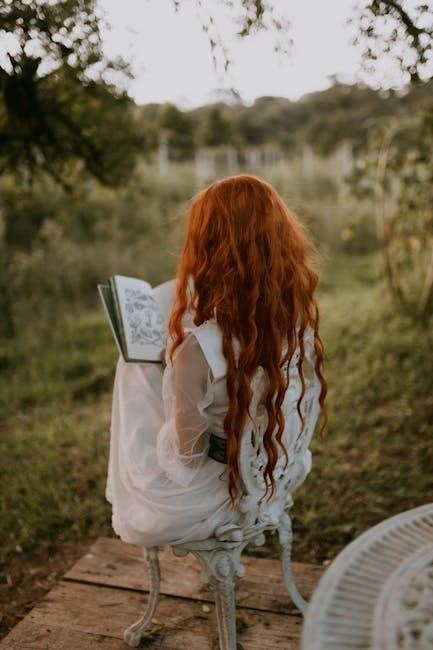
Adaptations and Interpretations
The tale has been reimagined in films, stage plays, and modern retellings, each offering unique perspectives while retaining the story’s timeless charm and moral essence.
7.1 The 1991 Disney Animated Film
The 1991 Disney adaptation of Beauty and the Beast became a beloved classic, blending enchanting animation with memorable music. It stayed true to the original tale while adding unique elements, such as the charming enchanted objects. The film’s success led to widespread acclaim, including the first Academy Award nomination for Best Picture for an animated feature. Its timeless themes and iconic soundtrack, featuring songs like “Be Our Guest” and “Beauty and the Beast,” captivated audiences worldwide, solidifying its place in cinematic history and pop culture.
7.2 Other Film and Stage Adaptations
Beyond Disney’s 1991 version, Beauty and the Beast has inspired numerous adaptations. The 2017 live-action film starring Emma Watson and Dan Stevens brought the tale to life with stunning visuals and a faithful retelling of the story. Additionally, various stage productions, including a successful Broadway musical, have captivated audiences globally. International adaptations, such as French and German films, offer unique cultural interpretations. These adaptations highlight the story’s versatility, proving its enduring appeal across mediums and generations while staying true to the original book’s enchanting essence and timeless themes.
7.3 Modern Retellings and Reimaginings
Modern retellings of Beauty and the Beast explore fresh perspectives, often blending the classic tale with contemporary themes. Novels like Beastly and A Court of Thorns and Roses reframe the story in urban and fantasy settings. These adaptations often emphasize diversity, with characters from varied cultural backgrounds. Additionally, digital media and indie films offer unique interpretations, such as gender-swapped roles or sci-fi twists. These reimaginings highlight the story’s adaptability, appealing to new audiences while preserving its timeless core themes of acceptance and transformation.

Controversies and Criticisms
The tale has faced criticism for promoting unhealthy relationships and patriarchal themes. Some argue Belle’s sacrifice reinforces problematic gender roles, while others debate the story’s portrayal of beauty standards.
8.1 The Debate Over Patriarchal Themes
Critics argue that “Beauty and the Beast” perpetuates patriarchal ideals, as Belle’s self-sacrifice and acceptance of the Beast reinforce submissive female roles. Her decision to stay with the Beast, despite his initial dominance, is seen as problematic, suggesting women should endure hardship for love. The Beast’s transformation, while redeemed, is interpreted by some as a justification for male control. Additionally, the lack of female authority figures in Belle’s family raises questions about the story’s portrayal of gender dynamics, further fueling debates about its alignment with patriarchal values.
8.2 The French Government’s Censorship Controversy
The original “Beauty and the Beast” faced censorship in 18th-century France due to its perceived subversive themes. The French government, wary of literature that challenged societal norms, banned the book temporarily. Villeneuve’s version included elements deemed too radical, such as critiques of social hierarchy and gender roles. The controversy highlighted the story’s ability to provoke thought, even as it faced suppression; This censorship underscores the book’s historical significance and its enduring relevance in sparking debates about freedom of expression and societal values.
8.3 Accusations of Promoting Unhealthy Relationships
Critics argue that “Beauty and the Beast” may promote unhealthy relationships by depicting Belle tolerating the Beast’s controlling behavior. Some view Belle’s devotion as romanticizing abusive dynamics, suggesting she sacrifices her autonomy for love. However, others interpret the story as a transformative tale where both characters grow, emphasizing mutual respect. The debate highlights the complexity of interpreting relationships in fairy tales, challenging readers to reflect on power dynamics and consent. This controversy invites deeper discussion about the story’s portrayal of love and partnership.

Educational Value of the Book
The book teaches moral lessons, fosters empathy, and promotes self-reflection, making it a valuable tool for character development and literary analysis in educational settings.
9.1 Moral Lessons for Readers
The book imparts timeless moral lessons, emphasizing the importance of inner beauty, kindness, and selflessness. It teaches readers to look beyond physical appearance and value compassion and empathy. The story encourages self-reflection, highlighting the transformative power of love and understanding. These lessons are conveyed through Belle’s unwavering kindness and the Beast’s journey toward redemption, providing readers with a profound understanding of ethical behavior and the true meaning of beauty. The narrative serves as a guide for fostering positive character traits and making morally sound decisions in life.
9.2 The Book’s Role in Teaching Empathy
“Beauty and the Beast” plays a significant role in teaching empathy by portraying characters’ emotional journeys. Belle’s compassion toward the Beast, despite his fearsome appearance, encourages readers to understand and connect with others’ feelings. The Beast’s transformation highlights the impact of kindness and understanding. The story fosters empathy by showing vulnerability and the importance of looking beyond surface-level impressions. It helps readers develop a deeper appreciation for emotional intelligence and the value of connecting with others on a heartfelt level, making it a powerful tool for emotional growth.
9.3 Using the Story in Literary Analysis
“Beauty and the Beast” offers rich material for literary analysis, exploring themes like inner beauty, transformation, and societal expectations. The story’s layered characters and moral dilemmas encourage critical thinking about human nature. Scholars often analyze its narrative structure, symbolism, and dialogue to uncover deeper meanings. The enchanted objects, for instance, symbolize the Beast’s internal world. This tale is a valuable tool for teaching literary devices, fostering analytical skills, and sparking discussions about ethics and emotions, making it a timeless resource for educational purposes.

Reception and Reviews
The timeless tale of “Beauty and the Beast” has captivated readers, earning critical acclaim for its universal themes and charm, cherished across generations and influencing culture.
10.1 Critical Acclaim and Scholarly Analysis
Scholars and critics have widely praised Beauty and the Beast for its profound themes and timeless appeal. The story’s exploration of inner beauty, selflessness, and transformation has been hailed as a masterpiece of fairy tale literature. Academic analyses often highlight its psychological depth, with the Beast’s journey symbolizing human redemption. Feminist scholars have also examined Belle’s agency and independence, offering fresh perspectives on gender roles. The book’s ability to resonate across age groups underscores its literary significance, making it a cornerstone of both scholarly study and popular reading.
10.2 Audience Reception Across Generations
Beauty and the Beast has captivated readers of all ages, transcending generational boundaries. Its timeless themes of love, transformation, and inner beauty resonate deeply with both children and adults. The story’s emotional depth and relatable characters have fostered a strong connection with audiences, making it a beloved tale across centuries. Its adaptability to modern interpretations ensures its relevance, allowing new generations to discover its magic. The book’s universal appeal continues to inspire readers, solidifying its place as a cherished classic in world literature.
10.3 The Book’s Impact on Popular Culture
Beauty and the Beast has profoundly influenced popular culture, inspiring countless adaptations, from films to stage productions. The 1991 Disney animated movie is a landmark, introducing the story to a global audience and cementing its iconic status. The tale has also inspired merchandise, music, and even theme park attractions. Its themes of transformation and inner beauty continue to resonate, making it a cultural touchstone. The story’s enduring appeal ensures its influence remains vast, shaping art, media, and imagination across generations.
The timeless tale of Beauty and the Beast captivates audiences with its universal themes of love and transformation, remaining a cherished classic across generations and adaptations.
11.1 The Timeless Appeal of “Beauty and the Beast”
The enduring magic of Beauty and the Beast lies in its universal themes of kindness, acceptance, and transformation. Its timeless appeal stems from the contrast between outward appearances and inner beauty, resonating across generations. The story’s ability to evoke empathy and reflection ensures its relevance in modern times. The characters’ depth, particularly Belle’s courage and the Beast’s vulnerability, fosters a connection with readers. This enchanting tale continues to captivate audiences, proving that true beauty transcends physical form, making it a cherished classic in both literary and cinematic forms.
11.2 The Story’s Universal Message
Beauty and the Beast conveys a powerful universal message about the transformative power of love and acceptance. It teaches that true beauty lies within, transcending physical appearances. The story emphasizes kindness, empathy, and understanding, encouraging readers to look beyond superficiality. Its themes of redemption and inner growth resonate globally, making it a timeless guide for personal reflection and moral development. The narrative’s focus on emotional depth and selflessness ensures its relevance across cultures and generations, offering a profound lesson in the enduring strength of compassion and love.
11.3 Final Thoughts on the Book’s Significance
Beauty and the Beast remains a cornerstone of literary heritage, offering timeless wisdom about love, acceptance, and self-discovery. Its enduring appeal lies in its ability to transcend generations, cultures, and mediums, resonating with readers and audiences worldwide. The book’s significance is not only in its charming narrative but also in its profound moral lessons, making it a vital work for both entertainment and educational purposes. Its influence on popular culture and its continued relevance underscore its lasting impact as a beloved and meaningful story.

